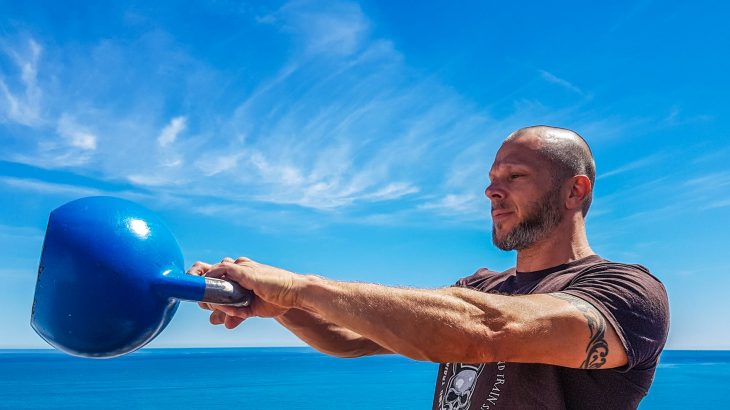First off, I’d like to state that far more people injure their backs getting up from the potty than they do swinging kettlebells or doing deadlifts. Most people who lift weights have a lesser incidence of back injury than the general population. Most injuries in lifters occur when they’re chasing big numbers, or if they’re coming back to lifting after a long sedentary period in their lives. Or if they’re complete noobies.
Kettlebell swings and injury.
– guaranteed it will happen at some point.
– you’ll have to learn from that
– you’ll have to decide if it was worth it
– for me, it was worth it because- after being damn near suicidal in my early twenties due to severe back pain that lasted 6 months, and staying afraid of back injuries most of my adult life, I’m now confident enough to lift, carry and throw weights that would break most untrained people in two. I did that through kettlebells. Clubs maybe safer though. But the progress is a lot more subtle. If I had to choose between the two, clubs first. Kettlebells are for people who want more outright strength, explosiveness and redline rpm endurance. It is for intensity addicts. I like both. Can’t do without either.
The best way to avoid exercise related injury would be to not exercise. This is the default method for most of our population.
Second best method would be to get one on one coaching.
Third method would be to progress gradually and sensibly.
I’m posting stuff I’ve learnt over the years below. It’s not an exhaustive list, but I’ll add as I remember and learn new things during my journey.
Other things to note
– if swinging daily keep total reps between 75-100
– if alternate day, can go up to 150.
-Always do one handed swings when you’re fresh
-one handed clean and press is safer than swings and snatches
– hinge pattern is best learnt with clubs
-rotation and anti rotation is for experts only. Clubs are far safer
– training rotation and anti rotation with kettlebells is better done with the “grind” family of movement- Turkish get up, windmills, arm bars.
– injuries always happen when you finish the set and place the bell down.
– a good way to avoid that is to start with dead stop swings instead of continuous swings.
– rep pattern I use is 10-15-25. Rep range beyond that isn’t useful unless you’re involved in Girevoy sport or want bragging rights.
TROUBLESHOOTING
This is what I used when I had the same problem. No movement of the spine involved. Only hip hingeing under control. Do it at tai chi pace.
I also used the single leg deadlift with the same 16kg kettlebell with hip hinge and extremely slow tempo. Again with core completely braced and moving only to the point where lumbar spine can be controlled and pain free. Basically exploring the edge of the range of movement where the pain started without diving headfirst. Each day I’d explore a little deeper.
Hanging from a pullup bar will help.
Do not hang with your hip at 90 degree flexion and knees straight. Usually a recipe for disaster.
Hang with bent knees and hips. 90 degrees at both. Later progressing to one leg straight and the other leg at 90-90. Finally both legs straight.
Breathing behind the shield throughout.
If you’ve got lumbar flexion pain, straight dead hangs with hips and knees extended may help. But most cases I’ve seen do best with the hang style described above.
The first 3 exercises in this video. The video is in Malayalam, I promise I’ll put up new videos in English soon. 😬 They shouldn’t cause pain if you’re doing them right. Avoid the 4th and 5th till pain is well under control.
The first one”baby roll” works like magic if done right. If you’re in pain doing even that, then wait. Just keep mobile. Use painkillers if you must. I don’t.
Once you are pain free, consider doing animal flow movements like bear crawls, leopard crawls, side kick throughs and front kick throughs to improve core control.
As always, looking for feedback.
